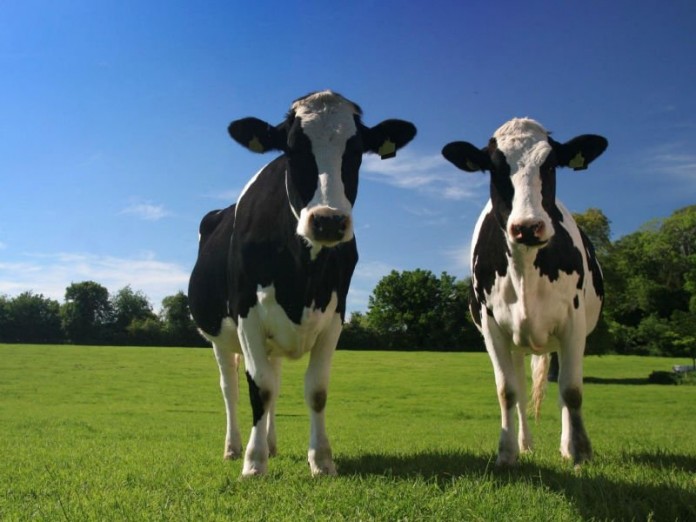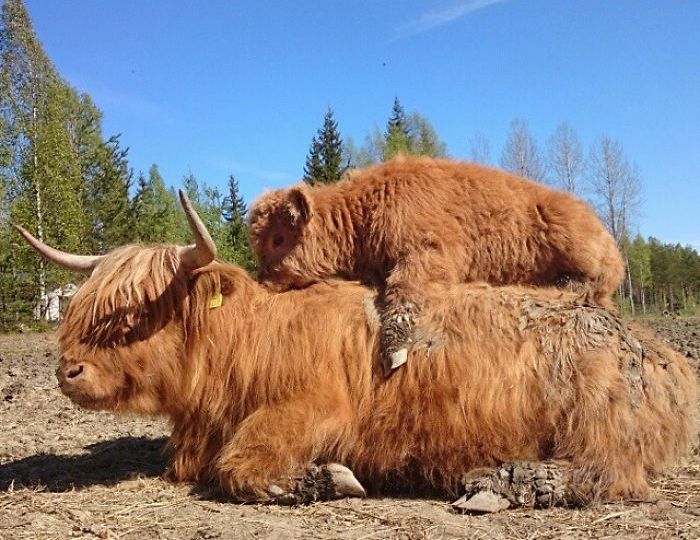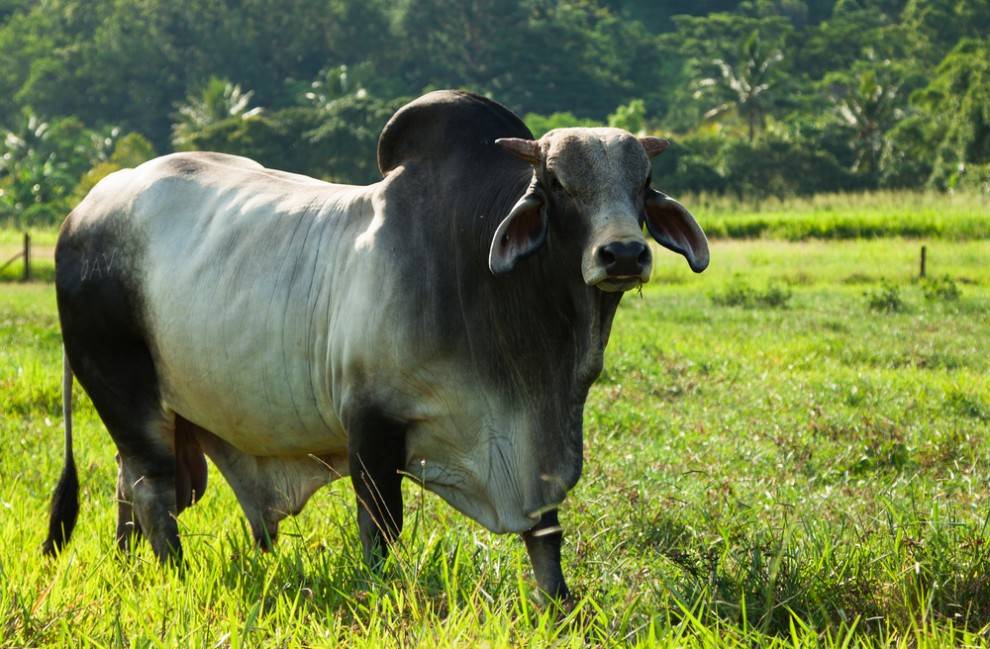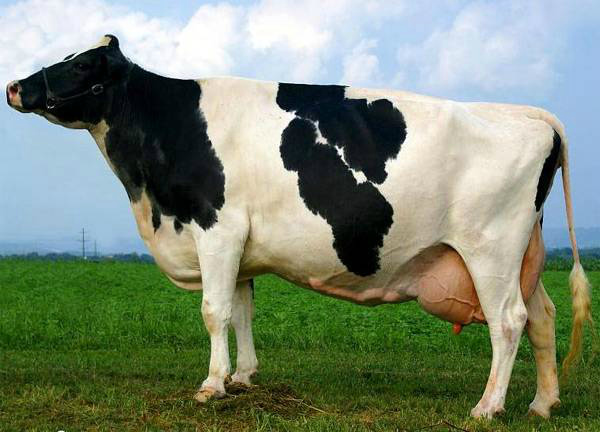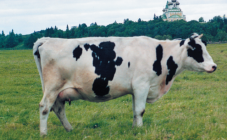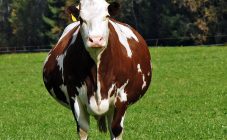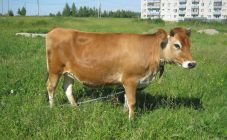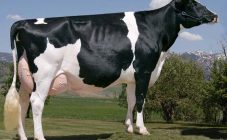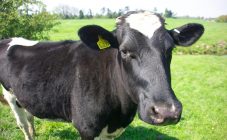Content:
In domestic and world agriculture, the greatest demand is for dairy and beef breeds of cows, each of which has its own individual characteristics, advantages and disadvantages. There is a rating of breeds that are most popular due to their advantageous characteristics. Cattle breeds, peculiarities of their care and maintenance are the topic of this article.
Types of cows: description
All breeds of cattle in terms of their productivity are divided into meat, dairy and mixed. When purchasing livestock, one should first of all decide for what purpose it will be raised: for the production of dairy products or for the sale of meat.
According to their individual qualities, cattle are divided into meat (they are raised only for the purpose of obtaining high-quality beef), meat and dairy and dairy (they are used to produce high-quality milk).
Cow breeds: TOP-10
There are a large number of breeds, so it is rather difficult to pay attention to one. First of all, the farmer needs to decide on the purpose for which he decided to engage in this difficult task and only after starting to study the rating of the best breeds.
- Black and white cow refers to the dairy direction. On the territory of Russia, they are very common, they occupy the third position in the domestic rating of dairy breeds. Due to the wide distribution of cows within the breed, there are several more varieties that are adapted to different conditions. Disadvantage: demanding on conditions of detention. A characteristic feature is a large udder, disproportionate to the body.
- Yakut cow considered unique in its kind, but, unfortunately, is on the verge of extinction. The humpback cow (the ancestors of the breed were zebu) lives in extreme weather conditions, therefore it has the strongest immunity, is unpretentious in care, and needs a small amount of feed. Yields up to 2 tons of milk annually, the average fat content of milk is 9%. Pedigree animals are also famous for their marbled meat, while European breeds often grow this product artificially, here it is a gift of nature.
- Montbeliard breed cows originated in France, but today it is common in Asia, Africa and North America, due to this excellent adaptive properties. Today there are more than 1.5 million heads around the world. The breed belongs to dairy, the milk is fat, the productivity is high, at the same time, the animals are unpretentious in food, they do not require much. The value of this breed's milk lies in the favorable ratio of protein and fat. At the same time, the meat of the breed is also famous, it is low-fat, the meat yield during slaughter is more than 50%.
- Alpine cows, as a rule, meat and dairy, since their milk is used to make chocolate and cheese, which is famous throughout the world. The breed is also used to obtain high quality meat. Alpine breeds have a special place in the rating, since in this case it is difficult to identify the leader, their main differences are in color and conditions of detention. There are breeds: Charolais, Limousine, Devonian cow and Herefords.
- Highland cow Is a meat breed originally from Scotland.The Scottish cow quickly escaped the borders of its homeland, and all thanks to significant advantageous features - unpretentious maintenance, long life span and excellent productivity indicators. A distinctive feature is the presence of a bang. Added to the above benefits are the high quality meat that is low in fat and excellent in flavor.
- Ayrshire breed - dairy breed, originated in Scotland, famous for its endurance and high reproductive performance. The weight of the animals is small, but the milk performance exceeds all expectations. If all the rules of nutrition and maintenance are observed, about 5 tons of milk with an average fat content of 4.2 are collected annually. It should be noted that this breed should be grown in regions with moderate climatic conditions, the animal does not acclimatize in high temperatures.
- Krasnogorbatovskaya the variety was bred by domestic breeders in the Volgograd region, the village of Bogorodskoye. The breed belongs to meat and dairy. It is famous for its high productivity (produces high-quality milk and meat), adaptability and simplicity in growing. It is also worth adding a few words about a strong immune system, animals practically do not get sick. Krasnogorbatovsky bulls and cows are considered to be among the best in domestic agriculture.
- Brahman - a breed bred as a result of crossing with zebu humpback cows. The Brazilian suit is now widespread in the countries of North and South America, as well as Africa and Australia. Popularity is due to fabulous endurance and endurance, strong immune system, unpretentiousness in care and maintenance, as well as obtaining quality meat. When slaughtered, the meat yield is more than 60%, these are decent indicators.
- Galloway breed- ideal for pasture keeping, picky in food and living conditions. It is famous for the aforementioned virtues, but besides that, it brings meat of the highest quality, it is low-fat, high in protein. The breed is most common in Northern England. When slaughtered, the meat yield is more than 55%.
- Bestuzhevskaya suit - a worthy reward for the fruitful work of folk selection, the breed was bred at the beginning of the 19th century in the domestic village of the Voronezh region, belongs to meat and dairy. Today they are willingly grown in the unfavorable climatic conditions of the Volga region, where they quickly adapted and show good productivity.
Cash cows: features of care and maintenance
Much depends on the care and quality of nutrition in the maintenance of cattle, for example, the life expectancy of the animal, its health, as well as milk yield and meat yield during slaughter. If you approach this issue rationally, you will be able to achieve maximum productivity with minimal cost.
Basic information about cattle feed
Unfortunately, the grass alone is not enough to ensure the life of the cow, which she nibbles in the meadow. By nature, the feed is divided into the following types:
- Mineral and vitamin supplements;
- Vegetable;
- Animals;
- Fodder mixtures and compound feed;
- Microbiological and chemical synthesis feed.
Each of them differs in energy value. Plant products, in turn, are also divided into several groups:
| Juicy | Concentrated | Rough |
|---|---|---|
| Root crops (potatoes, carrots, beets, etc.); Green food; Silage. | Grain feed; Waste from technical production. | Chaff; Hay; Straw. |
Animal products include waste and processed products from the dairy and meat industries. They are rarely included in the diet of animals, due to the needs of ruminants.
Cattle maintenance
Before purchasing cattle, you should take care of a place for keeping. With a small livestock, tethered keeping is possible at home.
Cows do not tolerate well:
- Irregular or poor-quality manure removal.
- High humidity.
- Deficiency of exercise.
- Increased concentration of harmful gases.
- Boring content.
- Unbalanced diet.
- Poor lighting.
A room for animals should be comfortable, and for a person - convenient, since he will have to work there. Required parameters for the construction of a barn:
- Ceiling height not less than 2.5 meters.
- The room must be equipped with an impeccable ventilation system.
- The walls are finished with several layers of whitewash.
- The permissible slope is up to 2 cm for each running meter.
- The total area of the windows must be at least 10 parts of the floor.
Stall arrangement
The place reserved for the animal must correspond to its size. The length of the stall should be less than the length of the animal by a few centimeters, this will prevent the accumulation of fecal matter on the bed. To simplify the cleaning process, you will need to build a gutter 30-40 cm wide. It will be much easier to remove manure from it, and sloped floors will allow urine to drain.
The width should be more than a meter, otherwise the animal will be able to calmly turn around in the stall, and this is unacceptable. The place of the tie should be made of hollow pipes; it is better to use pipes with a diameter of 10 cm.
The floors should be filled with asphalt or concrete. Wood flooring is acceptable, but due to chemical (faeces, dirt, urine) and mechanical stress, it will often need to be replaced. Be sure to lay straw on top of the floors.
Cow care
Cattle always respond well to improved housing conditions. Daily care of cows significantly increases their productivity, reduces feed losses, and also strengthens the animal's body.
Milk from a cow usually appears 7-10 days after calving. Despite its high nutritional value, it is extremely rarely used for human food, since the calf needs to drink.
- The mammary gland (udder) must be washed with warm water using hypoallergenic disinfectants.
- The milkmaid must also treat her hands with a disinfectant; all wounds must be disinfected with iodine.
- Then they wipe everything off with a towel (it should always be clean).
- The nipples should be washed immediately before milking, for this it is recommended to use a special washer glass. You can buy it at any specialty store.
Today there are a large number of cattle breeds. Of course, choosing the most suitable breed for yourself is difficult. At the very beginning, you should decide on the purpose of raising animals, they are necessary for the production of dairy products or for obtaining meat. If you need both, it makes sense to consider options for meat and dairy breeds.
